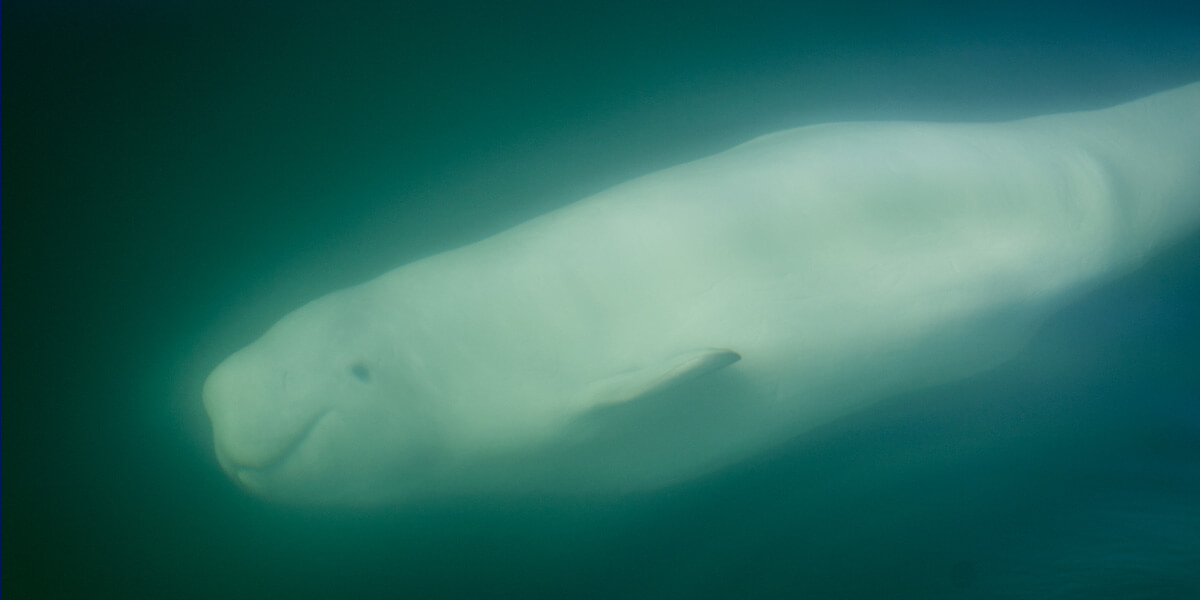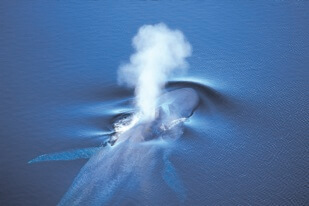Hearing
Sound travels four to five times faster in water than in air, which makes hearing an important sense for whales. Baleen whales use low-frequency sounds, which travel great distances. Toothed whales favour higher frequencies, both for communicating between members of a group and for echolocation, which works like sonar and allows them to detect their environment.
Sight
As the light penetrates the water, the colors disappear one by one and it gets darker and darker. The color blue is the only color that penetrates to the depths of the sea. However, cetaceans cannot distinguish blue. Their eyes are monochromatic and only allow them to see the world in shades of one color, between red and green depending on the species.
If they can’t see color well, cetaceans have a vision that is very adapted to life in the depths. Their eyes contain many photoreceptors called rods, which allow them to see well even in low light conditions. Like cats, they also have a reflective membrane behind the retina. Finally, cetaceans have several morphological adaptations that allow them to see as clearly underwater as in the air, and as well up close as at a distance.
How are the eyes of whales? Located on each side of the head, oval and placed above the corner of the mouth, the eyes of whales are small compared to the large size of cetaceans. Because of the position of their eyes, whales have poor 3D vision. They do not have a wide binocular vision like most carnivores. Their eyes, located at both ends of their head, allow them to have a wide field of vision.
Cetacean eyes are generally dark in color. This color is mainly determined by the quantity and type of pigments present in the iris of the eye. To avoid irritation, and since whales do not have tear glands, they have eyelids and glands that produce an oil covering the cornea to protect it. They also have a thick sclera (outer shell of the eye), a thick cornea, a complex network of blood vessels and massive eye muscles to protect the eyes from high pressure and low temperatures.



